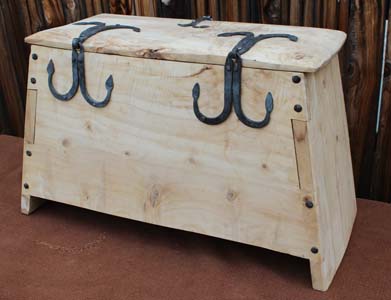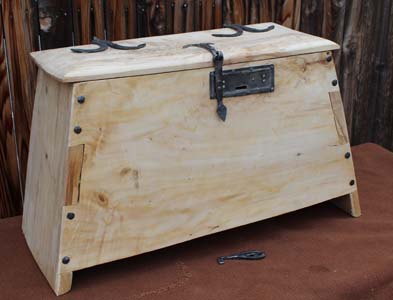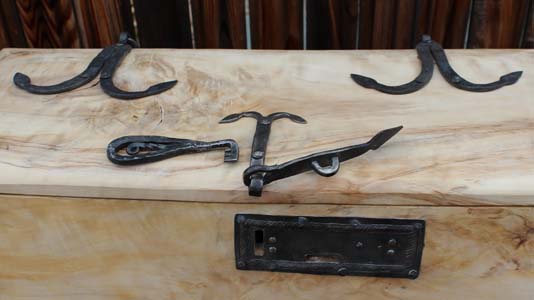


 I made this chest for my own use. The wood was purchased from a small sawmill who run a tree removal service. The wood is cottonwood, belonging to the poplar family of trees and was cut from local trees. None of the boards were run through milling machines to create uniform standard dimensions and were stickered and air dried for over a year.
I made this chest for my own use. The wood was purchased from a small sawmill who run a tree removal service. The wood is cottonwood, belonging to the poplar family of trees and was cut from local trees. None of the boards were run through milling machines to create uniform standard dimensions and were stickered and air dried for over a year.
After cutting the parts, I had left the chest assembled for about four months, having temporarily put it together with wood screws, just to assist in shaping the box. My intent was not to set the project aside but got too busy to get back to the project. For the final fitting I removed the screws and re-planed or carved joints that shifted before gluing and nailing with my own hand forged nails. There are 40 forged nails total, including those made to mount the hinges and hasp.
Both the hasp and hinges were forged from a recycled commercial garage door spring, originally 6 inches in diameter, with coiled 3/8' inch diameter rod.
I made the chest 19 inches in height, though I believe most sea chests were smaller, closer to the size of the Hedeby Chest.

This close up of the hasp and key shows the hasp's staple which goes into the working lock. The key lies next to the hasp. The top part of the hasp has a simple rolled "eye" to receive the lower part. The lower hasp's loop is bent and hammer welded to close the loop. In hindsight, it would be stronger to have punched a hole and widened it to the correct size. However, this is not a treasure chest but rather a Viking's suitcase. The Hedeby chest was a victim of by-passing sea chest security so it's best to keep an eye on your goods. Especially if your in a strange port.
To see details of the lock and it's construction, go to this page. Locks
Of interest to local reenactors and woodworkers here is a link to the sawmill who provided the lumber.
TC Woods - Tree removal and Custom Sawmill.